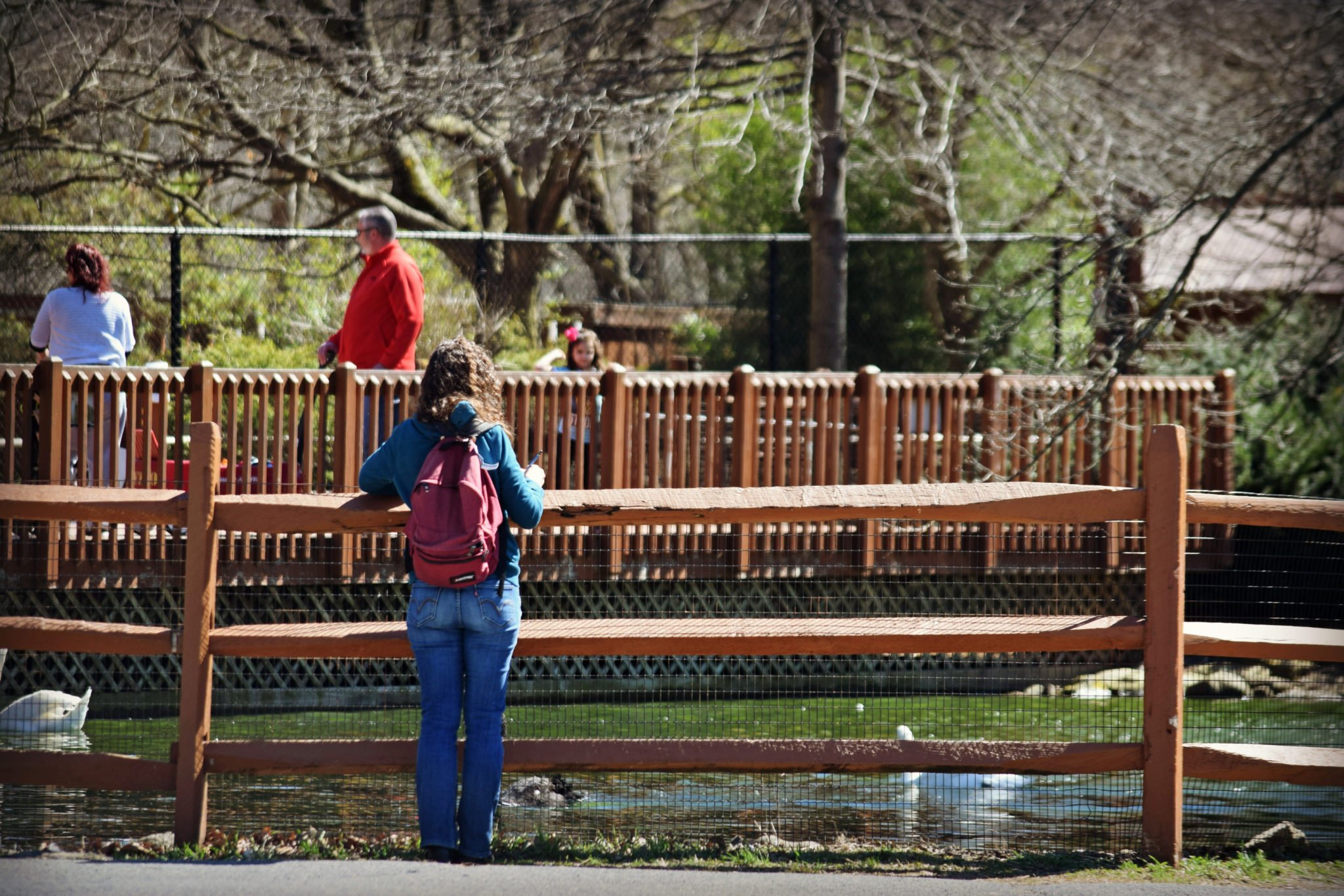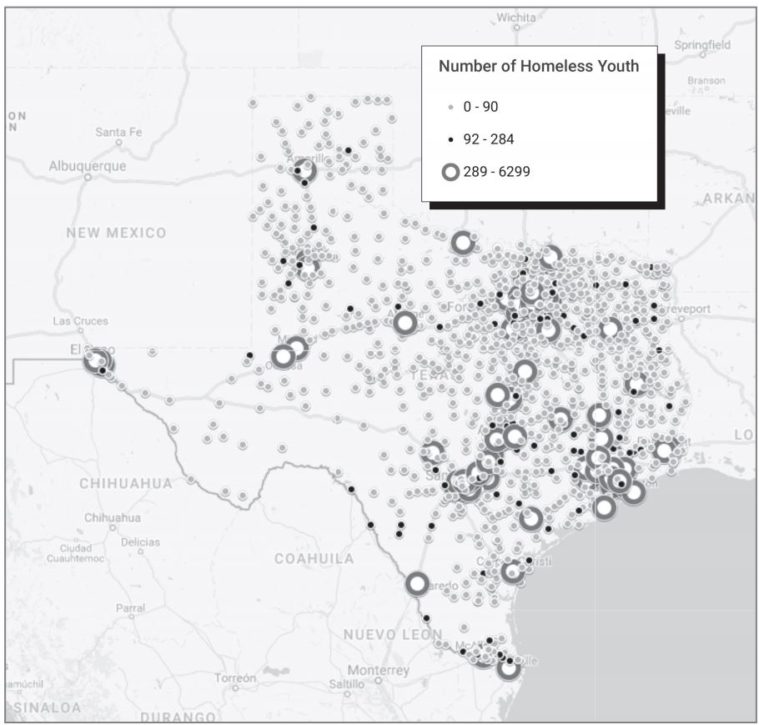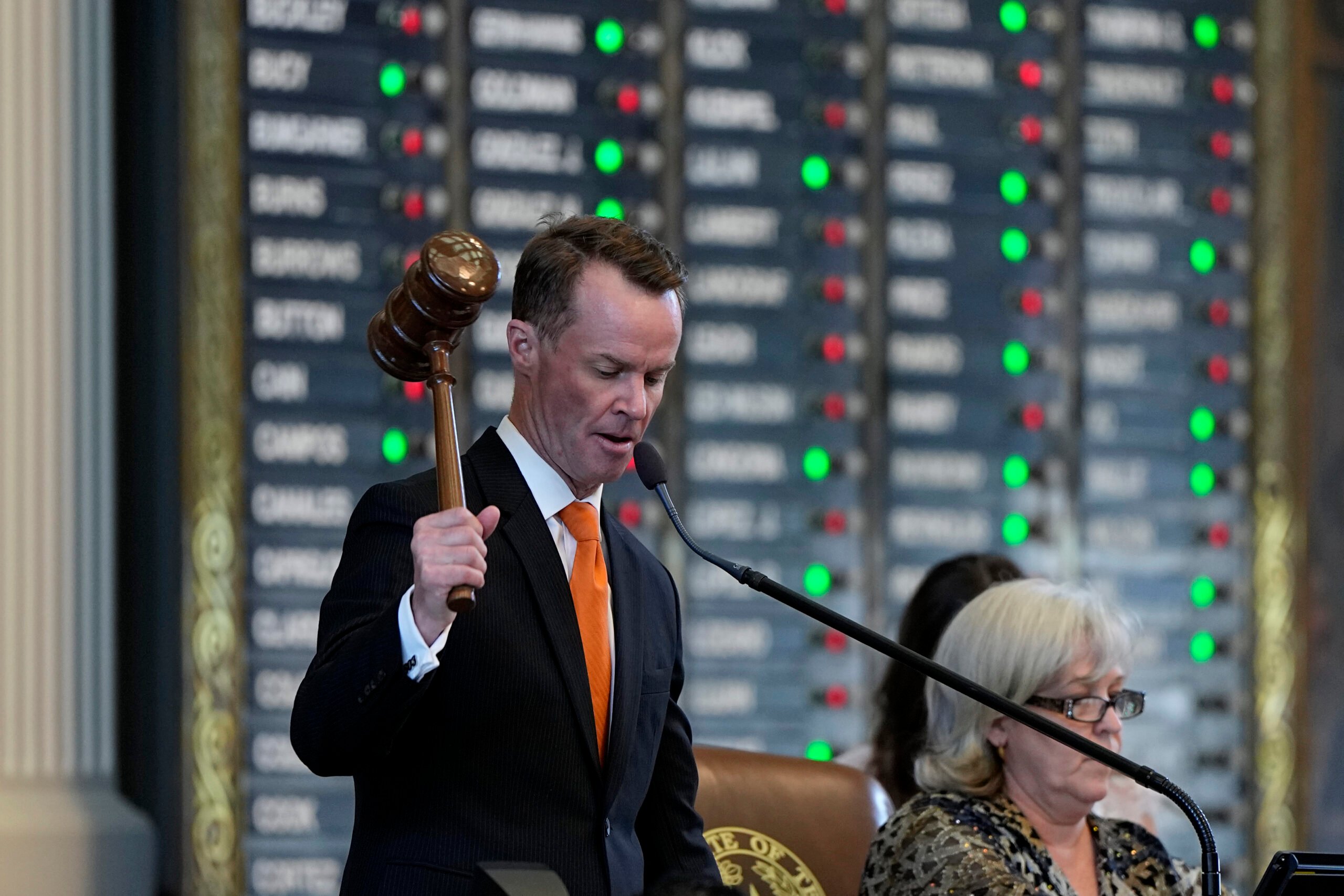
Homelessness in Texas Public Schools is a Suburban and Rural Problem, Too
The state of Texas provides no specific funding for the estimated 113,000 homeless students who attend public schools here.

Gage Kemp was 16 when he and his father were evicted from their home in Allen, a suburb of Dallas, and had to move into a motel. Kemp’s father, who struggled with alcoholism, urged him to drop out of high school and get a job to help pay the bills. Kemp was one of more than 100,000 homeless students attending Texas public schools, and therefore was eligible for assistance in getting transportation to and from class, buying supplies and clothes, and other services.
But Kemp didn’t know help was available, and no one at Allen High School told him. Eventually he dropped out. “If you watch the gradual course of my grades from elementary to high school, I was a straight-A kid and then it was Bs, and then to Cs,” said Kemp, now 23. “Learning about history didn’t matter to me. I was learning how to survive at home.”

There are approximately 113,000 homeless students in Texas public schools, according to a joint report released this month by advocacy groups Texas Appleseed and Texas Network for Youth Services. Many of those students live in urban areas, but some, like Kemp, live in suburbia and still more are in smaller towns across the state.
The report identifies a number of factors — including insufficient housing and “woefully inadequate” funding for homeless intervention at schools — as contributing to the problem. The findings also challenge the popular notion that student homelessness is a purely urban phenomenon. Though the highest number of homeless students were counted in Houston, San Antonio and Dallas, schools in the Abilene, Corpus Christi, Amarillo, Victoria and Midland regions reported some of the highest rates of homeless students.
For example, Houston ISD and Dallas ISD, two of the largest districts in the state, reported rates of 2.5 and 1.6 homeless students per 100 students enrolled, respectively. Meanwhile, Loraine ISD and Rule ISD, both near Abilene, reported rates of 17 and 16 homeless students per 100 students, respectively.
“I think the general takeaway is that student homelessness is a problem everywhere. Urban, suburban and rural,” said Christine Gendron, executive director of the Texas Network of Youth Services. The problem is more difficult to address outside of urban areas because rural and suburban towns sometimes lack shelters and other resources for homeless youth. And because homeless students often don’t readily identify themselves, they may be “invisible” to the untrained eye, Gendron said.

Kemp showed the signs of a troubled home life at school, including slipping grades and absences, but teachers and counselors didn’t seem to notice, he said. No one knew he was homeless. “I think if the counselors in my school had been more informed, they would have seen what was going on with me,” he said. Plus, it seemed like no one in his “very conservative, very white, very Christian” suburb wanted to acknowledge that youth homelessness existed in their community, Kemp said.
The federal McKinney-Vento Homeless Assistance Act requires every school district to designate one employee as a “homeless liaison.” The liaison is charged with identifying homeless students in the district, helping them enroll in school and offering supportive services. But when the Texas Network of Youth Services surveyed hundreds of school liaisons last year, they found that many of them served in that capacity in addition to performing other duties, such as full-time counseling. Liaisons reported spending a median of only two hours per week working with homeless students, and some were even unaware that they held the liaison title.
“I think in Texas, it’s just a lack of resources. Our funding isn’t enough for education in general, and districts feel the pinch when they need to provide additional services.”
Texas gets about $5.8 million in federal grants each year to fund homeless services at schools, but only 130 districts, or about 10 percent, are awarded money, the report says. Even the districts that don’t receive funding still must appoint a liaison and provide homeless services, leaving some schools — especially those in poor, rural areas — scrambling to identify and serve homeless students.
No state funding specifically for homeless students is provided to schools in addition to the federal money. “The resources are lacking. Texas needs to step up and bring resources to the table,” Gendron said.
When Norma Mercado was designated the homeless liaison for Bastrop ISD last year, the district historically had counted about 200 homeless students, less than 2 percent of its 10,500-student enrollment. But as she began meeting with students and their parents, she identified more and more who met the federal definition of homelessness: living with friends, staying in motels, sleeping in cars and tents. Mercado said she identifies a new homeless student almost every day.
“It’s not just identifying [homeless students], it’s case management,” Mercado said. “When I talk to other homeless liaisons, they’re overwhelmed. Working with youth and their parents requires so much time.” Mostly due to increased identification, Mercado expects the total number of homeless students in her school district to double this year. But when she met with the local Chamber of Commerce and Board of Realtors to discuss the issue, “They were surprised that homelessness was an issue.”
No shelters exist specifically for homeless youth in Bastrop County. Mercado said the lack of shelter is “the biggest challenge we face.”
In Texas, nonprofit and charitable organizations help to bridge the divide between services and the people who need them. Connections Individual and Family Services in New Braunfels provides shelter and counseling services to homeless youth in an 18-county swath of rural and suburban Central and South Texas, but is only able to offer shelters in two of those counties, said executive director Kellie Stallings. “In urban areas there are a lot of other options, but here there may not be a lot for these youth,” Stallings said.
Jeanne Stamp, director of the Texas Homeless Education Office at the University of Texas at Austin, said most school administrators she meets express a desire to help homeless students, but they sometimes struggle to identify those in need and provide services once they do. “I think in Texas, it’s just a lack of resources. Our funding isn’t enough for education in general, and districts feel the pinch when they need to provide additional services,” Stamp said.


